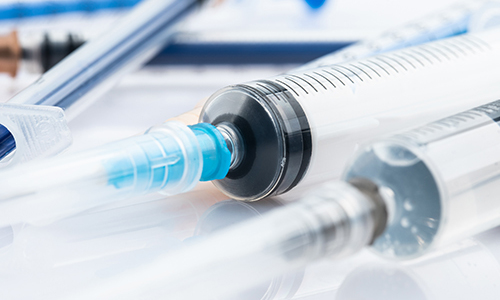Understanding TPEs Thermoplastic elastomers are low-modulus, flexible materials. Their building-block polymers vary and can include styrenic block copolymers, olefins, thermoplastics, and other materials. Researchers continue to introduce complex new TPEs like metallocene-catalyzed polyolefin plastomers (POPs) and elastomers (POEs). These very-low-molecular weight, linear low-density polyethylenes (VLMW-LLDPE) are becoming common in flexible packaging films and in molded goods that see light-duty and moderate temperatures. Copolymerizing thermoplastic olefins (TPOs) in a reactor rather than through melt-blending polypropylene (PP) with an elastomer is another relatively recent move. The variety of chemistries available lets designers tailor materials for properties like clarity, injection moldability, and abrasion resistance. But all TPEs have room-temperature elasticity. Most TPEs can stretch repeatedly to at least twice their original length, some up to 10 times their length, without significant permanent deformation. In tension, most TPE blends can withstand 400 to 1,000 psi while specially formulated TPEs, like thermoplastic polyurethanes (TPUs), can exceed 5,000-psi tensile strength. The range of strengths reflects the myriad chemistries TPEs encompass. A two-phase molecular structure gives TPEs their combination of strength and flexibility. Amorphous areas, or blocks, in the polymer are soft and provide its elastomeric nature, making the material supple and flexible. The harder crystalline blocks give tensile strength and resistance to chemicals and heat. For example, styrene-ethylene/butylene- styrene (SEBS), a styrenic block copolymer (SBC), is made of a styrene hard phase and a butadiene elastomer phase. The crystalline areas form physical crosslinks in the polymer structure while the amorphous phase provides the material’s elastic properties. TPEs gain their strength from this type of physical cross-linking; they are not chemically cross-linked or vulcanized, as thermoset rubber is. The lack of chemical cross-linking means TPEs are appropriate for recycling. Processors can also skip the aftermold vulcanization step thermosets need. Depending on the raw materials, premold mixing can also be shortened or eliminated. To meet multiple customer requirements, TPE suppliers alloy and compound polymer building blocks. Engineers can tailor TPEs to have a softer feel, more vibrant color, a nonslip surface, or vibration damping properties. Adding TPE’s resilience and softer touch can improve comfort, cushioning, ergonomics, and safety for a part’s end users. Using TPEs, designers can ensure that equipment is safer to operate and easier to handle by helping to improve grip, provide better nonskid surfaces, and maintain flexibility at lower temperatures. The materials can also supply vibration damping to help minimize motor noise, vibration transmission, or impact shock. TPEs also have good colorability and accept special visual effects. Designers can overmold a clear TPE onto a patterned or colored substrate or use a pearlescent or tinted material to create the desired look. Custom-colored TPEs, which can be formulated to have a shiny or matte finish, let manufacturers skip secondary operations like painting or coating. Working with TPEs TPEs can be extruded, blow molded, and thermoformed. Manufacturers can also injection mold them. High-pressure injection molding can yield thin-walled TPE parts. Some grades of the material also support insert molding and one and two-shot molding. Any of these conventional processing techniques work with TPEs using conventional molding equipment. Thus, designers often substitute TPEs for traditional materials to improve product performance, cut down on cycle time, lower equipment costs, or eliminate secondary operations. For example, TPEs replace low-density polyethylene (PE) in the blow-fill-seal process for making eye and nasal-drop bottles. With TPEs, the bottles can be transparent and more flexible than with PE. Bottles made with TPEs can also survive higher temperatures. This gives packagers the option of autoclave sterilization at 121°C, a temperature close to the melting point of many grades of PE. The U.S. Food and Drug Administration (FDA) favors high-temperature sterilization. TPEs can also be sterilized using other standard methods such as steam, ethylene oxide (EtO), e-beam, and gamma radiation. High-performance TPEs can also be over-molded onto rigid plastic parts. Over-molding eliminates potential points of failure by creating a chemical bond between a plastic substrate and the TPE. One example of TPE overmolding is a vial stopper for medical applications. The original part consisted of a polypropylene (PP) sleeve that positioned a separate thermoset elastomer button over the vial. Engineers developed a single two-shot part where TPE is overmolded and fuse-bonded to PP via two-shot injection molding. In addition to halving the number of parts, the fuse-bonding cut down on the potential for leakage failures. Fewer potential avenues for failure means engineers need to do fewer tests to prove the assembly will safely perform its function. In highly regulated industries, like the medical-device arena, this can mean a quicker, less-costly route to regulatory approval. TPEs can also be used for barrier applications such as dynamic seal gaskets and static seal plugs.Potential applications include syringes, intravenous systems and blood collection equipmen
